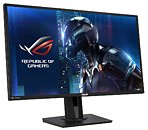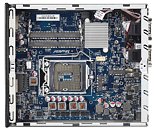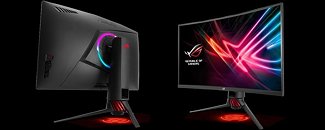
AMD "Navi" Graphics Card PCB Pictured, uses GDDR6
Pictures of an upcoming AMD Radeon "Navi" graphics card bare PCB made it to the web over the weekend. The picture reveals a fairly long (over 25 cm) board with AMD markings, and a layout that doesn't match with any reference-design PCB AMD launched so far. At the heart of the PCB is a large ASIC pad that appears to be within 5 percent of the size of a "Polaris10" chip. The ASIC is surrounded by eight GDDR6 memory pads. We could guess they're GDDR6 looking at the rectangularity of their pin-layout compared to GDDR5.
The PCB has provision for up to two 8-pin PCIe power inputs, and an 8+1 phase VRM that uses premium components such as rectangular tantalum capacitors, DrMOS, and a high-end VRM controller chip. There's also provision for dual-BIOS. The display I/O completely does away with DVI provisioning, and only includes the likes of DisplayPort, HDMI, and even USB-C based outputs such as VirtualLink. The fan header looks complex, probably offering individual fan-speed control for the card's multi-fan cooling solution that could resemble that of the Radeon VII. Looking purely at the feature-set on offer, and the fact that "Navi" will be more advanced than "Vega 2.0," we expect this card to be fairly powerful, going after the likes of NVIDIA's RTX 2070 and RTX 2060. AMD is expected to unveil this card at the 2019 Computex, this June.
The PCB has provision for up to two 8-pin PCIe power inputs, and an 8+1 phase VRM that uses premium components such as rectangular tantalum capacitors, DrMOS, and a high-end VRM controller chip. There's also provision for dual-BIOS. The display I/O completely does away with DVI provisioning, and only includes the likes of DisplayPort, HDMI, and even USB-C based outputs such as VirtualLink. The fan header looks complex, probably offering individual fan-speed control for the card's multi-fan cooling solution that could resemble that of the Radeon VII. Looking purely at the feature-set on offer, and the fact that "Navi" will be more advanced than "Vega 2.0," we expect this card to be fairly powerful, going after the likes of NVIDIA's RTX 2070 and RTX 2060. AMD is expected to unveil this card at the 2019 Computex, this June.










































































